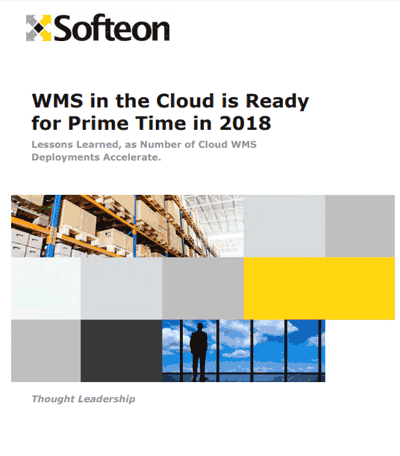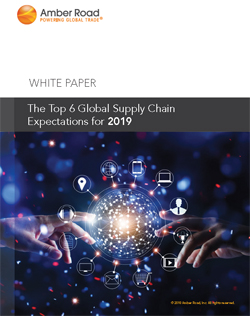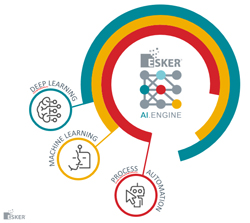The Gurus Are Back! 2019 Supply Chain Predictions
We're back as we have done for many years running with predictions for the year 2019 in supply from a virtual panel of supply chain gurus.
In fact, most of our prognosticators are back from 2018, selected again for this great honor - well, something of an honor - because in the past they have made insightful predictions and (very importantly) are able to get them emailed in before the deadline.
As I say every year, given how difficult it is to make predictions in this crazy world of supply chain, these prognostications are part prediction, part a discussion of trends, part some things to look out for - but it is all good, and I much enjoy these pieces every year. As always, I'll publish two First Thoughts columns summarizing those predictions from all our gurus, followed by full text versions of the predictions in our OnTarget soon after.
| GILMORE SAYS: |
Another key trend, Ghopal says, is the integration of the customer experience and the supply chain.
WHAT DO YOU SAY?
Send us your
Feedback here
|
Let's start with my friend Mike Regan of TranzAct Technologies, whom I will note was predicting the "perfect storm" that drove trucking costs way higher in 2018 well before it happened.
However, 2019 will be a year for shippers to regroup and recover from the Perfect Storm, Regan says now.
"Carriers benefitted from a seller's market in 2018, and few shippers were prepared for the double-digit carrier rate increases that blew out freight budgets and resulted in significant unfavorable variances," Regan notes. "It was the year freight went from the docks to the boardroom and demanded that C-Level executives finally take a keen interest in strategies to reduce their company's freight costs."
As shippers move to clean up after the storm, Regan predicts these will be among the top concerns:
Market volatility: Regan says that while rates went only one direction last year (up), shippers will see significant rate fluctuations in both directions in 2019.
Why? Carriers are intent on maximizing their capacity and have the data and the technology to respond to market directions and change pricing "on the fly." For example, he notes in Q4 there was a 20%+ change in spot market rates for refrigerated truckload moves.
"If they have any excess capacity, carriers will quickly lower rates; if capacity is tight, they will quickly raise their rates," Regan says.
But remember, Regan adds, capacity remains tight, so even small blips on the transportation radar will have a disproportionately large impact on rates.
Data Analytics: Regan says that in 2019, carriers will continue to improve their use of data to analyze and understand their customers.
"In many instances, carriers already know a shipper's freight better than the shipper," he observes. "In this post-ELD and dimensionalizer (for LTL carriers) world, they know how long a shipper is utilizing their assets and the space being consumed on their trailers."
Carriers (especially LTL) will continue focusing on density and dimensional based pricing to improve their operating ratios, Regan says, adding that all carriers will penalize shippers for excessive detention/demurrage as they look for capacity that provides a suitable ROI.
"Shippers who live in an "Excel" world (a.k.a. shippers who manage their transportation area with Excel spreadsheets) are in for a world of hurt in 2019," he says.
Next, my good friend Gene Tyndall, exec VP at Tompkins International and now running the company's interesting MonarchFx efulfillment network. He has offered predictions each year since I started doing this in 2008.
Let's give Gene credit for starting off by reviewing his top three predictions for 2018, which were as follows:
• More innovation and transformations, although not necessarily the right investments.
• Continued amazing growth of ecommerce, with impacts all industry segments.
• Expanded disruptions, due to customer demands, new technologies, and the ever-increasing "needs for speed".
Tyndall says that "These three proved to be consistent with overall strategic trends, but were not necessarily the overwhelming drivers of all tactical changes we observed this year. Too many other factors had serious impacts, such as the economy itself; the sociopolitical conflicts; and the "Trade Wars," impacted supply chains significantly."
 Tyndall's first prediction for 2019 is explosive ecommerce growth will impact companies even more comprehensively. Tyndall's first prediction for 2019 is explosive ecommerce growth will impact companies even more comprehensively.
Now that is not exactly a risky prognostication, but I think he is right that the ecommerce megatrend impacts everything - business strategy operations strategy, and supply chain planning and execution.
"Whether selling direct to consumers, or to businesses, ALL companies must transform their supply chains to achieve high levels of performance for ALL channels, or risk losses in brand recognition, market share, and/or profit," Tyndall says.
He likes the term "unified commerce" as an alternative to "omnichannel," a concept that involves all channels operating in an integrated way so as to present a single view of the truth (and experience) to customers. Pressure to achieve unified commerce will intensify this year, Tyndall says.
He also predicts we will see much more relocation of assets, sources, distribution, flows of goods, and business processes in 2019, in a trend that he says is already well underway.
What's that all about?
"The unpredictable global economic climate, changes in Trade Agreements, increases in cross-border orders, sociopolitical concerns, and targeting new markets will combine to change global supply chains" this year, Tyndall says. As a result, international transportation and trade will return to corporate agendas, he says, though in a different way than when China was becoming the "world's factory" in the early 2000s.
A variety of forces are pushing sourcing out of China for many companies. But alternatives, such as Vietnam, Indonesia, and India, have inadequate supply chain infrastructures, and there can be sustainability and ethical sourcing issues too. So such moves need to be taken very carefully, Tyndall notes.
Some of that asset shift involves bringing back manufacturing to the US, with Tyndall citing the recent announcement by shoe maker New Balance on a new advanced manufacturing facility in Massachusetts as an example of this Trend. The [slow] return of textiles production in the US. is another sign, as is the regeneration of steel manufacturing.
But the shifting of logistics assets in an Amazon world is even more impactful, Tyndall says, adding that the logistics landscape is "changing in historic ways." As part of all these operational changes, deployment of robotics in the supply chain will simply become an imperative, Tyndall says.
Our friend Dr. Chris Ghopal, consultant and academic, identifies three key trends for 2019. The first involves the people side of supply chain.
He notes that "While the shortage of fulfillment center/DC workers and truck drivers, driven mainly by ebusiness, is dominating the news, it is the shortage of qualified supply chain professionals that will prove the true constraining factor."
In fact, he says that the term of the day is "talent development and management." While an increasing number of universities are providing supply chain degree and certification programs, there are still too few, and, he says, many of these are mired in the past - either academically or in industry practice. As a result, universities are not meeting the needs of industry.
Another key trend, Ghopal says, is the integration of the customer experience and the supply chain - an areas that will also drive much innovation.
This integration already has a start in the buzzword realm, Ghopal says, with one executive telling him he was thinking of using the term "Customer Chain."
"It is becoming increasingly apparent that the battleground for the consumer is about more than just price - it is the customer life cycle experience that drives revenue, incremental revenue, customer retention, brand equity and the net promoter score," Ghopal adds, noting that "The bulk of the customer experience is driven by the supply chain - from the ease of doing business (EODB), speed, perfect order and on-time delivery, inventory availability, customer communication, convenience, returns, packaging, ease of change by the customer, mobility and tracking and, of course, upfront transparency and price."
Now, he says, supply chains, historically driven by lowest total cost, are being designed from the "customer back."
All good stuff. Full text of these guru predictions coming soon in our OnTarget newsletter, and summaries from another set of gurus next week.
Any reaction to the guru predictions? What resonates with you? What are some of your 2019 supply chain predictions? Let us know your thought at the Feedback button below.
|



![]()

![]()

![]()












